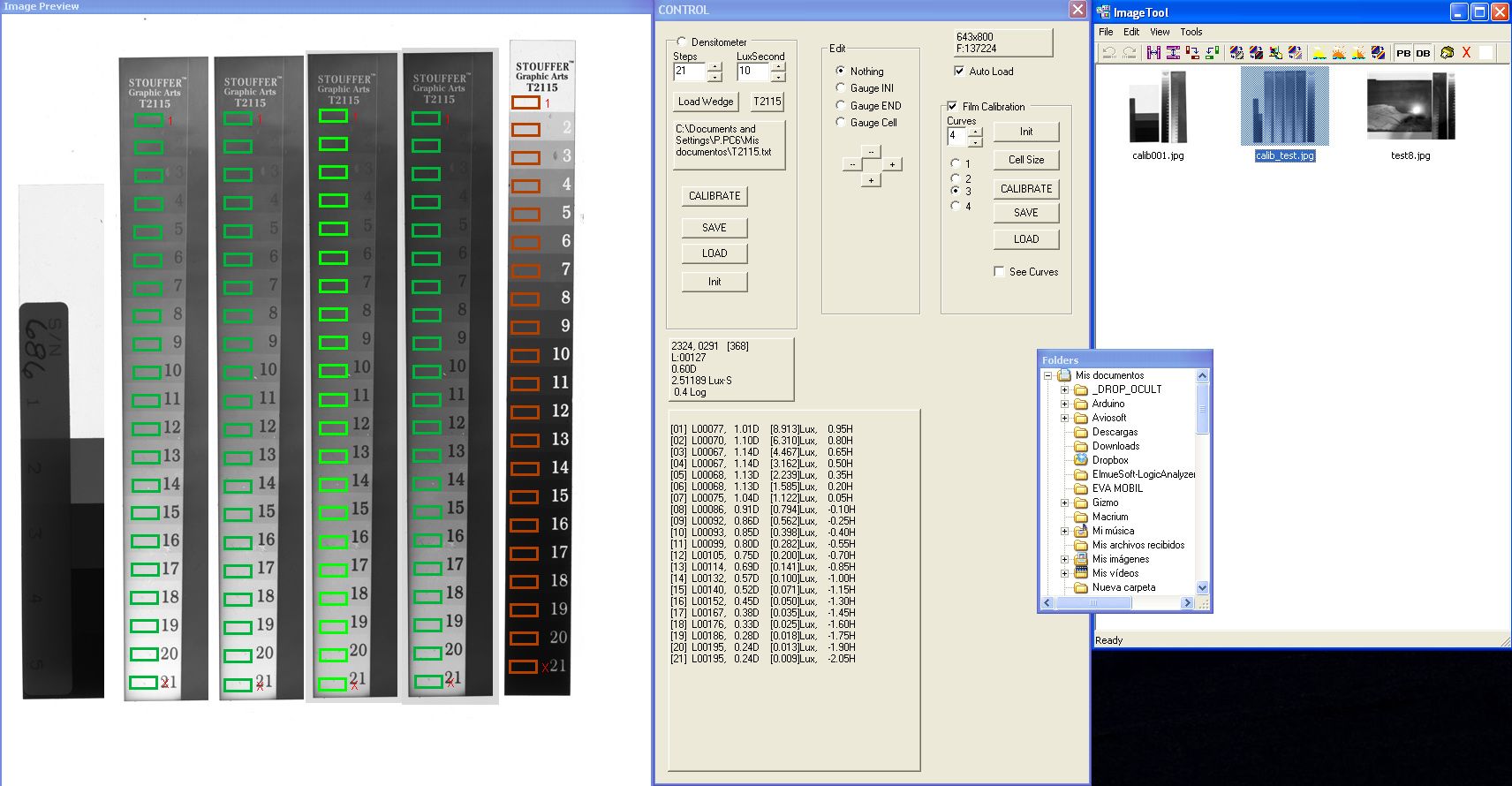I'd request opinions and suggestions for a new software I'm developing (to be relesed as open source/freeware), intended to speed up darkroom technical procedures.
Motivation: a) To plot curves is boring, for DIY emulsion, BW slide reversal calibration, carbon calibration, paper calibration, paper contrast calibration for a RGB LED illumination of the enlarger, SCIM/CRM and calibrations for contrast color mask with Alan Ross method. b) Practicing a bit GDI+ I'll have to use, this was also a motivation.
Features:
1) Densitometer:
A pictorial Negative is scanned alongside the stouffer wedge, the red cells are dragged (mouse) on the stouffer, densities of the steps are in a configuration so the software can compare what gray levels are what densities, by moving the mouse to any spot on the negative we see what density is.
2) Curve families for Film calibration:
We place (wyswyg) the green cells on the contact copies osf the stouffer, we enter the exposure in LUX.S, then from densities in the stouffer we know exposure in each green cell, so the software knows the exposure in Lux·S and density for each step of each curve, a text file is generated with a data column for each wedge (All have same exoisure but each has a different development, see BTZS)
This file is imported in Exel so we can plot all curves instantly. So a film calibration requires scanning the contact copies of the stouffer alongside the stouffer itself, adjusting position of the step areas by dragging with mouse, and a click in the calibration button, and then data rows are in Excel, no densitometer, no manual data handling to make a calibration, just making an scan.
Until here it works nice yet, next is planned:
3) Paper calibrations.
4) Proofing silver gelatin paper result by selecting a paper calibration, a negative scanned alognside with a stouffer, and LUX.s exposure reading with lux meter on the easel without the negative. We can determine aproximate paper grade and exposure, this development step is necessari to to to the 5).
5) Generating a 3D LUT to be used in Ps, that will allow proofing the printing of a negative sandwiched with contrast color mask. In one Ps layer we have the image, with calibrated densities thanks to the stouffer that has been scanned with the negative. In the next layer we have the color mask for VC papers that we draw on the BW image. Nex is a applied the calibrated 3D LUT generated by this software that is to make the proofing, so wswyg the effect of the contrast mask.
The target is to make easy crafting a good contrast mask, sure some adjustments would be required in the darkroom when we see the real result on paper, but 90% of the work would be made without wasting paper.
Welcomed:
Any kind of critique, constructive or destructive. Ideas. Opinions about what components would be useful, possible additions. Volunteers to test the software while is developed to see how the thing goes.
I don't ask help for coding the software but that it would also be welcomed, PM for that.
IMHO a tool that boosts control in the darkroom would make optical printing more competitive, being easier to obtain sound results that now are only possible with hybrid system.
Well, perhaps this is also kind of hybrid process, because be make the contrast mask from digital, but at least we have an authentic optic projection crafting the image, helping with complex prints, but at same time allowing for adding any ammount of manual crafting, burning/dodging and the like.




 Reply With Quote
Reply With Quote






Bookmarks